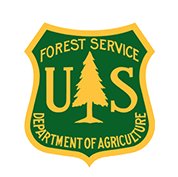See the 'Announcements' and 'News' Tabs for the latest information on planned prescribed burns.
With the arrival of spring, firefighters across the Bitterroot National Forest are gearing up for their annual prescribed burning operations to reduce hazardous fuels, restore wildlife habitat, and better protect communities from future wildfires.
Underburning, a type of prescribed fire treatment, ignites vegetation under the forest canopy or in open grassy meadows and focuses on the consumption of surface fuels. Frequent, low-intensity fire is essential in improving habitat conditions by regenerating fire-adapted vegetation and encouraging the growth of new forage and food sprouts for wildlife.
“This is the time of year when we have the opportunity to be proactive and meet our forest-wide goals of reducing hazardous fuels in key areas near communities,” said David Tingley, Bitterroot National Forest Fuels Fire Management Officer. “Over the coming weeks, we will be burning on days that maximize safety and minimize smoke impacts to restore healthy forest conditions.”
Spring prescribed fire activities normally take place from March to May and burning is highly weather and fuels dependent. A mosaic pattern of burned and unburned areas will remain after treatments.
All total, fire managers plan to burn approximately 3,774 acres this spring. Smoke may be visible at times from West Fork Highway, East Fork Road, or Highway 93. Treatment areas include:
Darby/Sula Ranger District – 2,292 acres are planned:
- Waddell Units, south of Lake Como
- Como/Horse Lick, south of Lost Horse and north of Lake Como- 152 acres complete
- Trapper Bunkhouse, SW of Darby between Little Tin Cup & McCoy Creeks - 131 acres complete
- Cameron Blue, along East Fork Road near Guide Creek
- Teepee Face & Schultz Saddle, east of Sula and north of Springer Memorial
- Tolan Ecoburn, east of Sula between Reimel and Tolan Creeks
- Lower West Fork Units, south of Trapper Creek and north of Lloyd Creek
- School Point Ecoburn Units, west of Boulder Creek and east of Halford Creek
- Upper Larry Bass Units, within the Bass Creek Recreation Area northwest of Stevensville- 620 acres complete
- Three Saddle Units, Sapphire Mountains east of Stevensville
Prescribed burning operations will only be conducted if conditions are favorable. Favorable conditions include correct parameters for temperature, wind, fuel moisture, and ventilation for smoke. When prescription criteria are met, firefighters implement, monitor, and patrol each burn to ensure it meets forest health and public safety goals.
All prescribed burns will be implemented in compliance with Montana air quality standards and coordinated with the Montana Department of Environmental Quality to reduce the impacts of smoke to neighbors, cooperators, and surrounding communities. Smoke may settle in the valley bottoms and drainages overnight, but it is expected to dissipate within a few days.
For public safety, recreationists are asked to be aware of fire crews and vehicles in these areas. The public is also asked to avoid traveling in prescribed burn units while crews are present, as well as trails and roads directly adjacent to the units. Please take caution as roads and trails used as control lines for the burn could be temporarily impacted by low intensity fire and smoke.
Maps:
Interactive Planned Prescribed Fire Map
| Current as of | Fri, 10/07/2022 - 06:00 |
|---|---|
| Incident Type | Wildfire |
| Cause | Lightning |
| Date of Origin | |
| Location | 7 miles west of Pinesdale MT |
| Incident Commander | Type 4 |
| Coordinates |
46° 18' 42'' Latitude
-114° 24' 41
'' Longitude
|
| Total Personnel: | 13 |
|---|---|
| Size | 915 Acres |
| Percent of Perimeter Contained | 0% |
| Fuels Involved | Down heavy fuels in the understory. |
| Significant Events | With small storms moving through fuel moistures are expected to recover, however, this recovery is slow. Lower elevation southern aspects are generally dominated by open canopy ponderosa pine with an occasional Douglas-fir, while northern slopes are dominated by closed canopy Douglas-fir/ponderosa pine. In the understory, the ninebark has cured and will aid in fire spread, while the snowberry will act as a heat sink because it has not yet cured. Above 6000 feet mixed conifer stands dominate with lodgepole pine and subalpine fir and a mix of Douglas-fir, ponderosa pine, and an occasional larch. |
| Planned Actions |
Continue construction, improvement, and rehabilitation of indirect control lines on National Forest Lands. Continue reconnaissance to determine primary and contingency line locations on private lands. |
|---|---|
| Projected Incident Activity |
12 Hours: Minimal fire behavior is expected. |
| Weather Concerns | Continue warm weather through the weekend. Easterly winds Thursday and Friday. Potential moisture after the first of the week |
|---|

 InciWeb
InciWeb